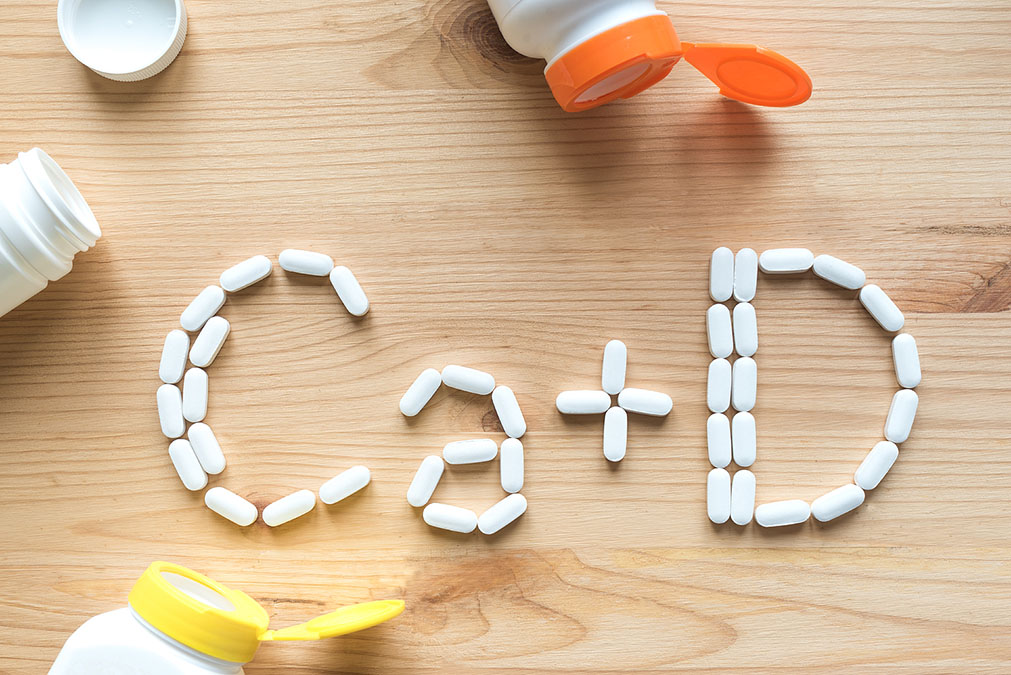 Up to now, the traditional medical system had no reliable solution for the most common type of vertigo.
Up to now, the traditional medical system had no reliable solution for the most common type of vertigo.
A study in the latest edition of the journal Neurology, the journal of the American Academy of Neurology, now shows that taking one type of mineral and one type of vitamin together can cure it.
Best of all, both the vitamin and the mineral are dirt cheap and available in all supermarkets.
Benign paroxysmal positional vertigo is the type of vertigo in which calcium carbonate crystals detach from a membrane in your inner ear and fall inside the semicircular canals nearby, where they irritate nerve hairs that then send false balance information to your brain.
Many previous studies have discovered that people with low calcium and vitamin D levels are more likely to suffer from this type of vertigo, probably because the calcium in our inner ears is meant to be strong enough to not detach from its location—this doesn’t occur in people who have enough calcium and vitamin D in their bodies.
Calcium and vitamin D are both important, as our bodies need both of them to build strong calcium structures such as bones.
Researchers in South Korea identified 957 people who had been diagnosed with this type of vertigo at different hospitals between 2013 and 2017. They were all treated successfully with a series of head movements.
They were divided into two groups: an intervention group and an observation group.
The intervention group consisted of 445 people, 348 of which had vitamin D levels below 20 ng/mL (nanograms per milliliter of blood) and were given supplements of 400 IU (international units) of vitamin D and 500 mg (milligrams) of calcium twice a day.
The participants in the intervention group, whose vitamin D levels were at least 20 ng/mL, were not given any supplements.
The observation group consisted of 512 people who were neither given vitamin D tests nor placed on supplements.
When compared with those in the observation group, those in the intervention group who took supplements experienced a 24% reduction in the rate of recurrence of their vertigo.
Those who had the lowest vitamin D levels at the beginning of the study reaped the greatest benefit, with participants whose scores were lower than 10 ng/mL seeing a 45% reduction in recurrence, while those with scores between 10 and 20 ng/mL saw a 14% reduction.
In total, 47% of participants in the observation group suffered another vertigo attack, while only 38% of those in the intervention group did.
So, for at least some, the vitamin and mineral cured their condition, while for others, it drastically improved it.

 Overcoming IBD
Overcoming IBD Multiple Sclerosis
Multiple Sclerosis Banishing Bronchitis
Banishing Bronchitis Gum Disease Gone
Gum Disease Gone Overcoming Onychomycosis
Overcoming Onychomycosis Neuropathy No More
Neuropathy No More The Prostate Protocol
The Prostate Protocol Brain Booster
Brain Booster
 Ironbound
Ironbound
 Solution for Shingles
Solution for Shingles
 The Bone Density Solution
The Bone Density Solution
 The Ultimate Healing Protocol
The Ultimate Healing Protocol
 The Parkinson's Protocol
The Parkinson's Protocol
 The Chronic Kidney Disease Solution
The Chronic Kidney Disease Solution
 Overthrowing Anxiety
Overthrowing Anxiety The Fatty Liver Solution
The Fatty Liver Solution The Hypothyroidism Solution
The Hypothyroidism Solution
 The End of Gout
The End of Gout The Blood Pressure Program
The Blood Pressure Program
 The Oxigized Cholesterol Strategy
The Oxigized Cholesterol Strategy
 Stop Snoring And Sleep Apnea Program
Stop Snoring And Sleep Apnea Program
 The Arthritis Strategy
The Arthritis Strategy The Vertigo & Dizziness Program
The Vertigo & Dizziness Program The 3-Step Diabetes Strategy
The 3-Step Diabetes Strategy Hemorrhoids Healing Protocol
Hemorrhoids Healing Protocol The Erectile Dysfunction Master
The Erectile Dysfunction Master Weight Loss Breeze
Weight Loss Breeze The IBS Program
The IBS Program The Insomnia Program
The Insomnia Program The Migraine and Headache Program
The Migraine and Headache Program The Neck Pain Solution
The Neck Pain Solution The Menopause Solution
The Menopause Solution The Ejaculation Master
The Ejaculation Master The TMJ Solution
The TMJ Solution The Acid Reflux Solution
The Acid Reflux Solution The Fibromyalgia Solution
The Fibromyalgia Solution The Psoriasis Strategy
The Psoriasis Strategy